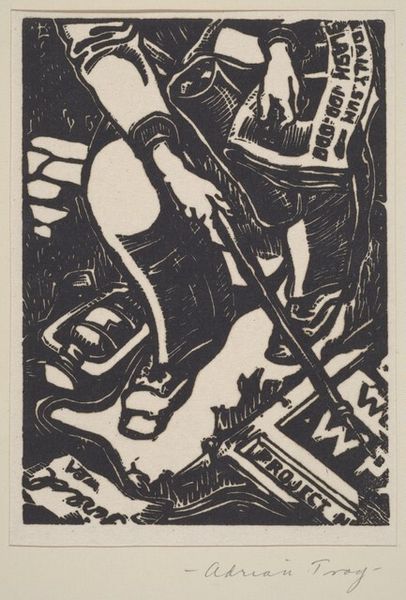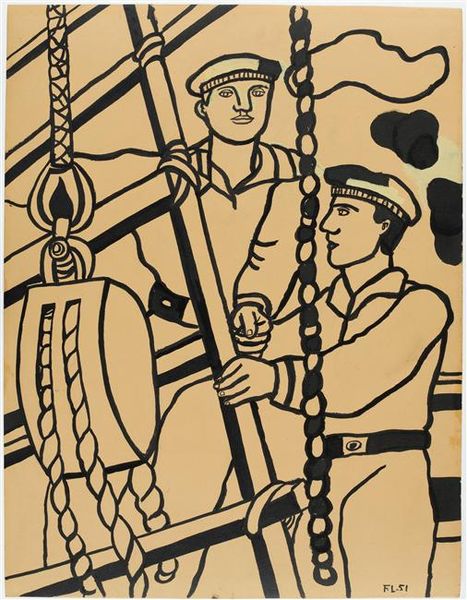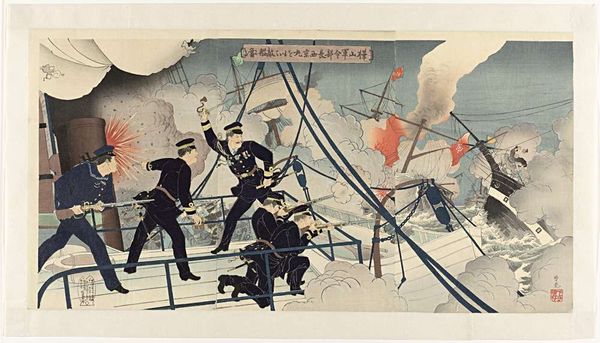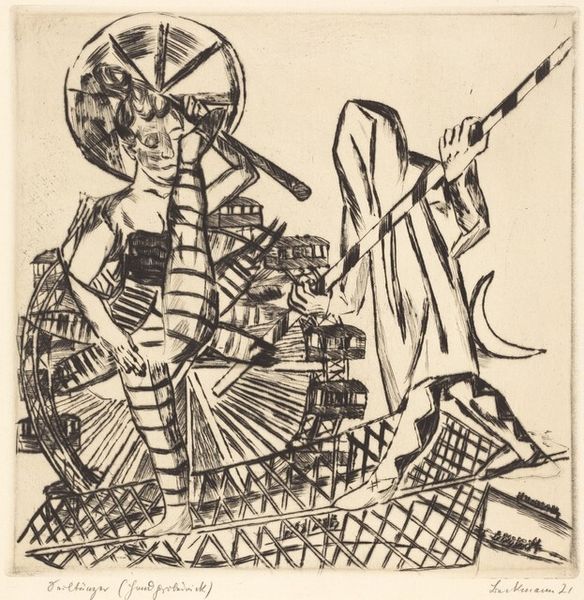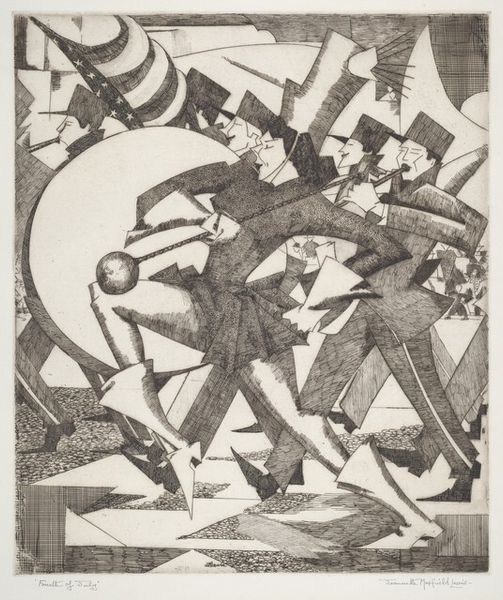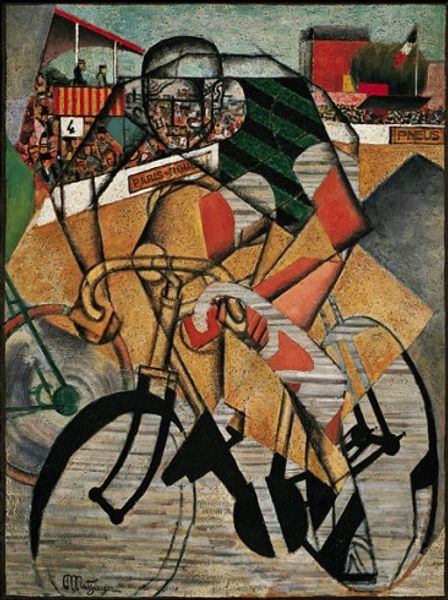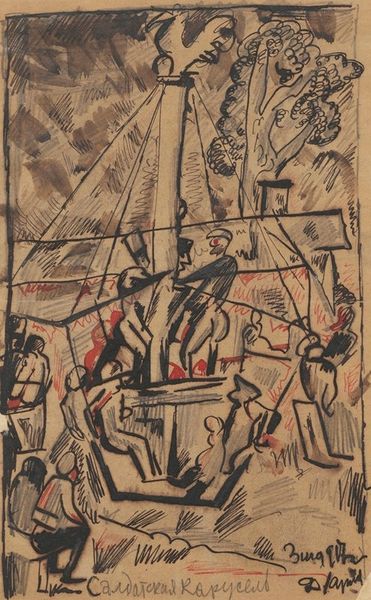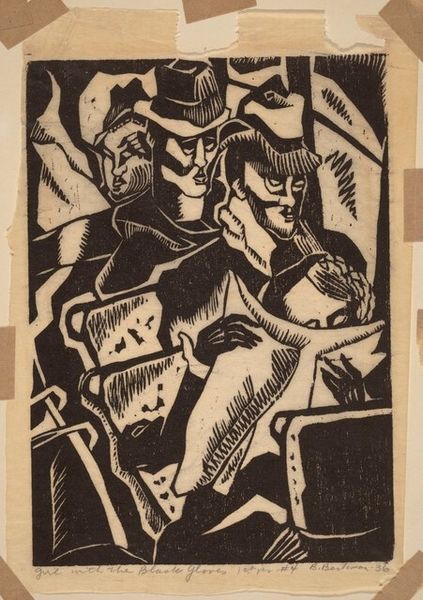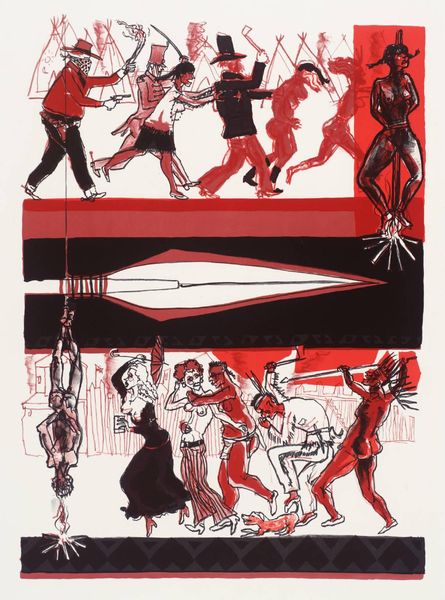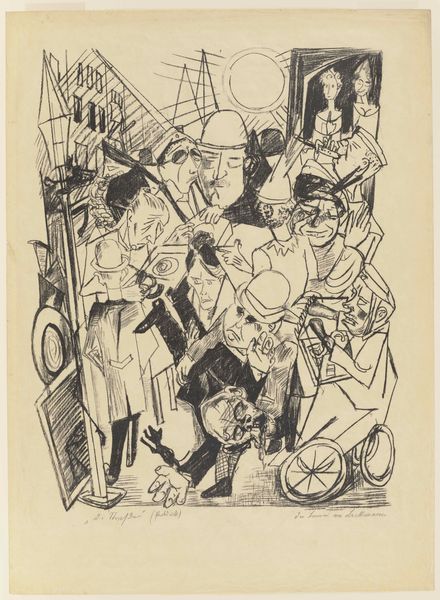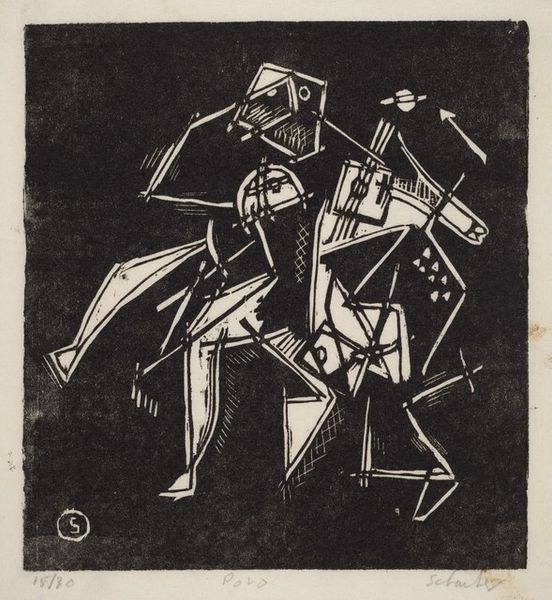
painting, watercolor
#
portrait
#
painting
#
social-realism
#
watercolor
#
expressionism
#
naive art
#
cityscape
#
watercolour illustration
#
modernism
#
watercolor
Dimensions: 26.5 x 21.5 cm
Copyright: Martiros Sarian,Fair Use
Curator: Martiros Sarian's "Workers," painted in 1927, captures a scene of Parisian labor with a unique blend of social realism and expressionism. It's primarily executed in watercolor. Editor: My first impression is a dynamic mix of the intimate and industrial. There is the detailed rendering of the two workers with their blue coats, while there's this sort of looming geometry in the back— a sense of them almost being caged by the modern structures of Paris. It feels both admiring and slightly claustrophobic. Curator: Indeed, that tension is palpable. The use of watercolor gives it a transient, almost fleeting quality, yet the subject matter is about the backbone of urban life. Observe the color palette, for example, how it reinforces symbolic structures – the earthy tones and red draw us to the figures while, at the back, the white and blue are diluted and fading. It draws out attention, highlighting the work that builds these iconic locations, whilst somewhat taking away the workers humanity as cogs of a greater system. Editor: I’m struck by the diagonal lines and the architectural framework—they do create this sense of enclosure. It begs the question: what was Sarian trying to communicate about the lives of these laborers during the interwar period? Were they perceived as part of Paris’ identity? What part does industrial advancement have on the everyman's freedom? Curator: Sarian himself was deeply involved in understanding his own cultural heritage, bridging tradition with modernity. Here, I feel, there’s an exploration of that same impulse in French society. The figures almost seem like archetypes rather than specific individuals, representing this universal idea of workers shaping the city through work. I don't know how freeing that is for them though, especially given they would then become somewhat trapped to this legacy, as they were known only by the job they preformed. Editor: The "Workers" embodies that pivotal moment in early 20th-century art, where artists sought to depict the human condition amidst rapid social and technological transformation. I love the suggestion, within the style itself, about cultural identity. It all has such a potent atmosphere and makes this an image you just can’t look away from. Curator: Precisely. Sarian offers more than just a depiction, it encourages us to contemplate these lives within a symbolic system, shaped by labor, legacy, and urban architecture.
Comments
No comments
Be the first to comment and join the conversation on the ultimate creative platform.
